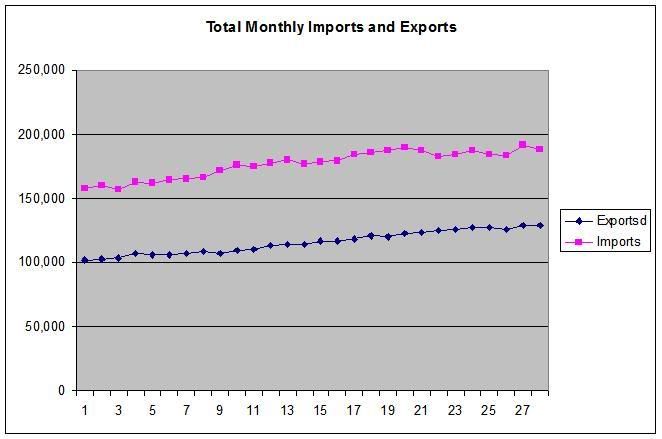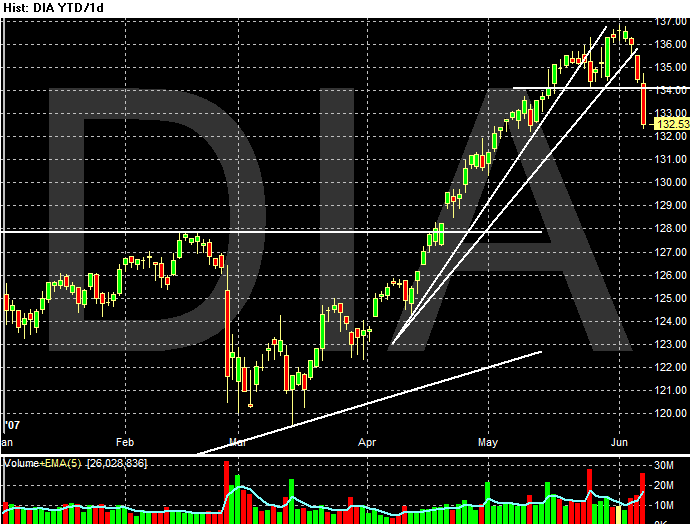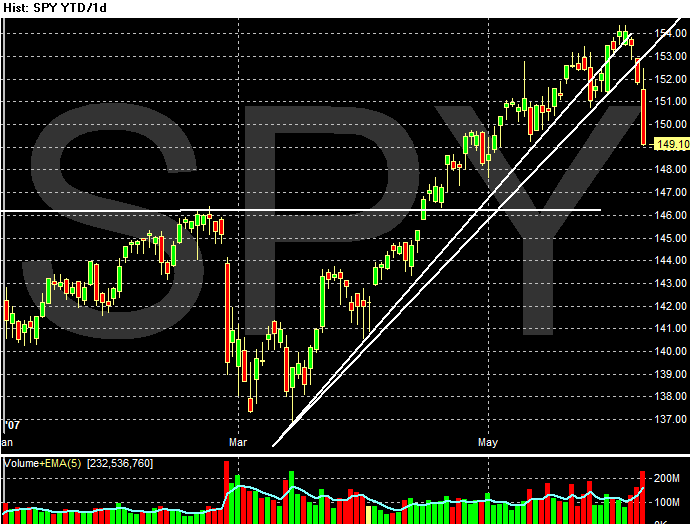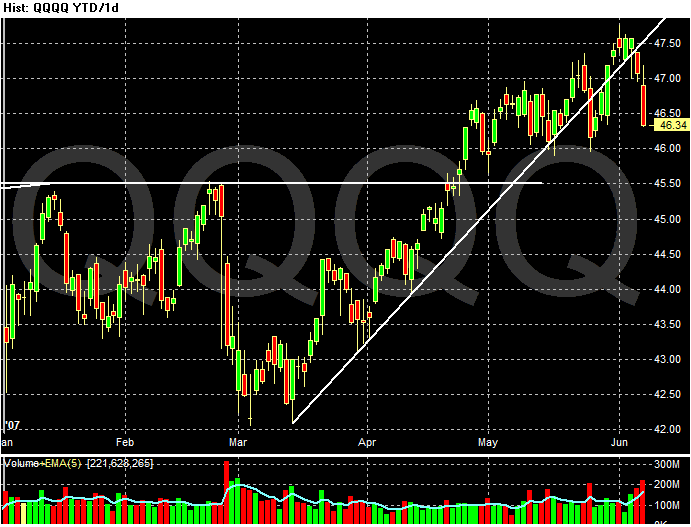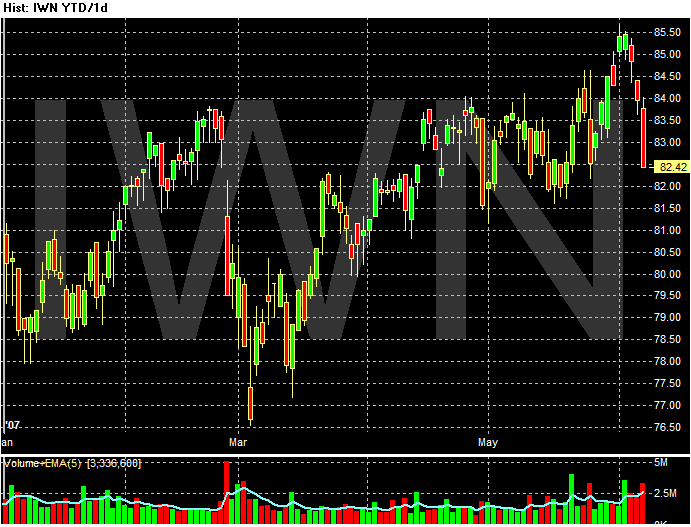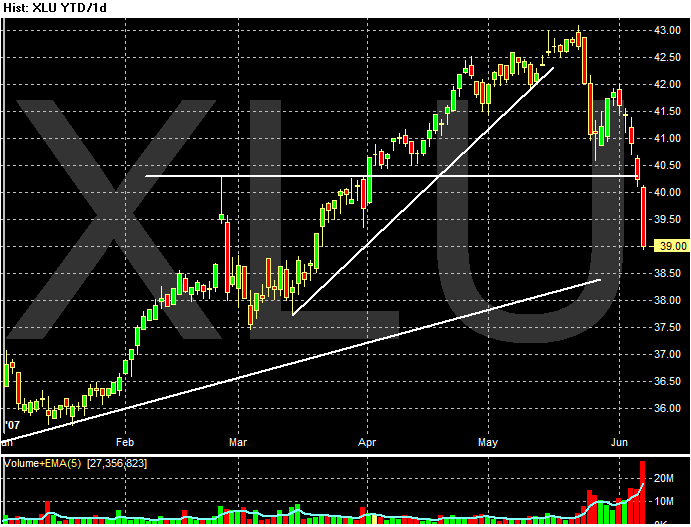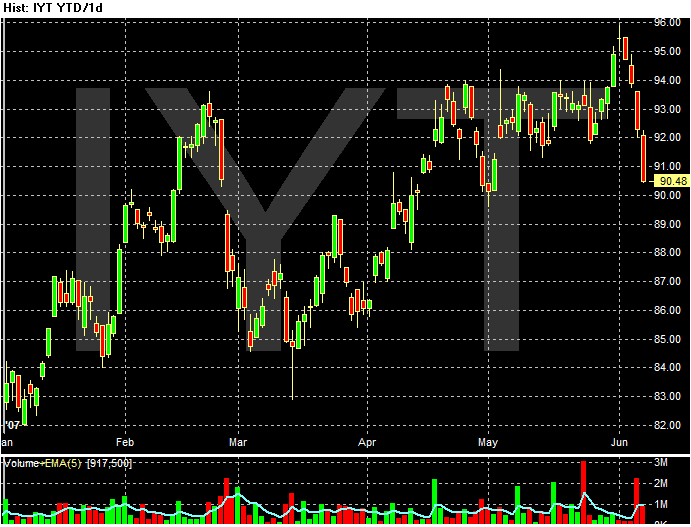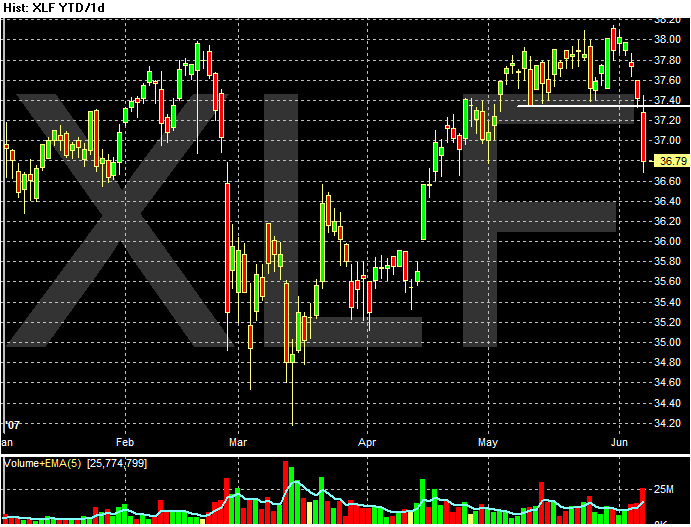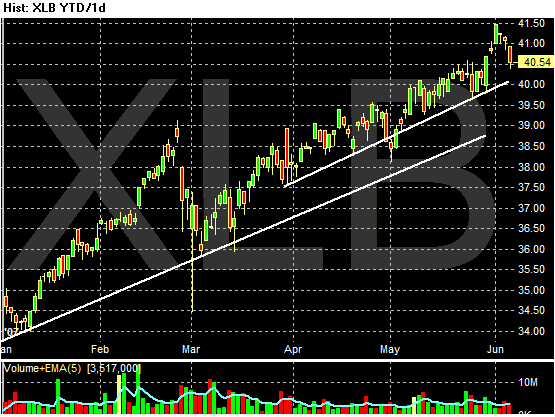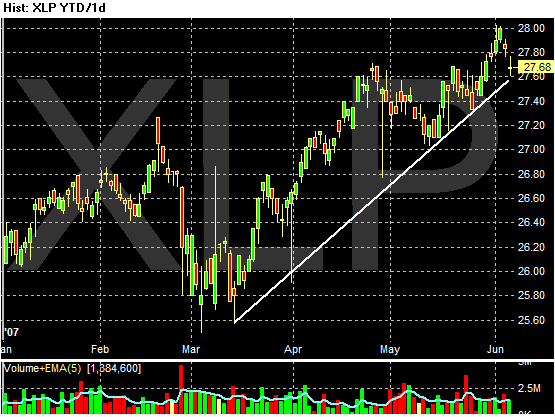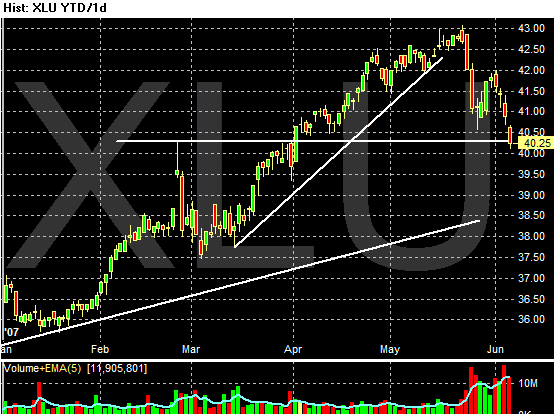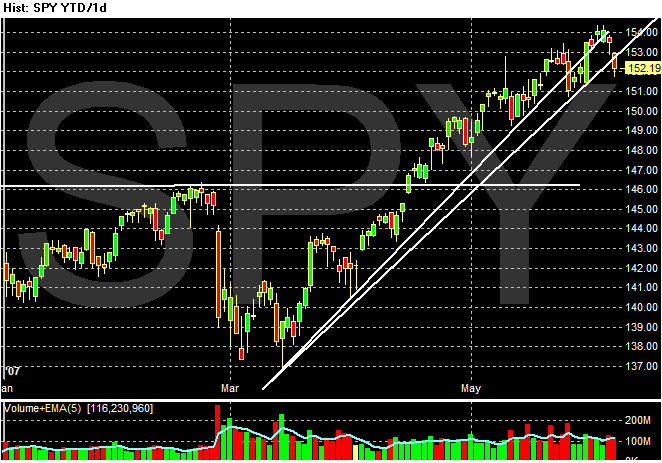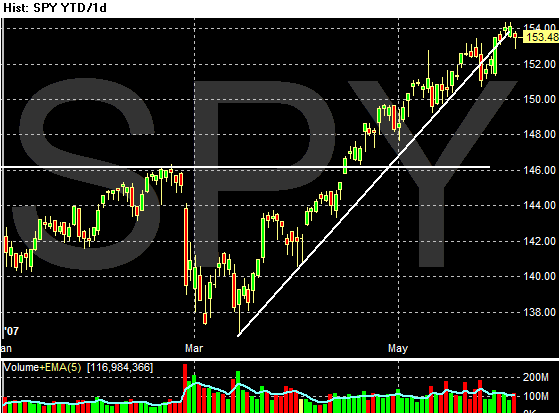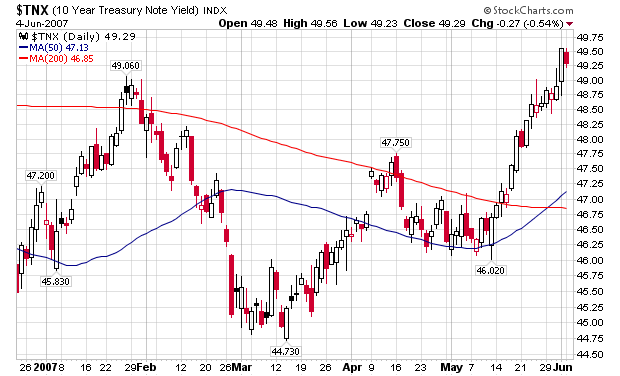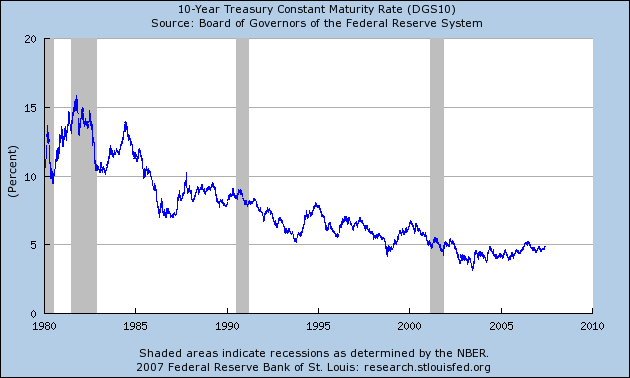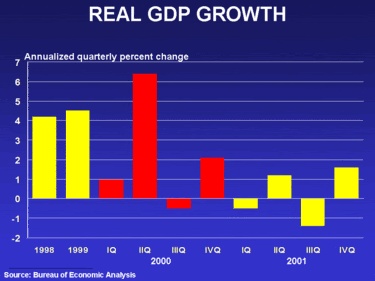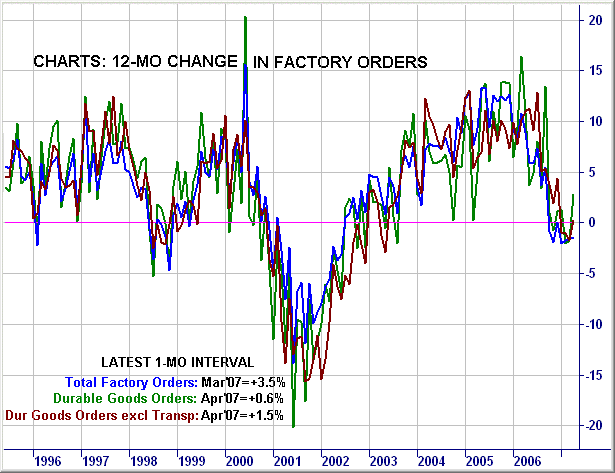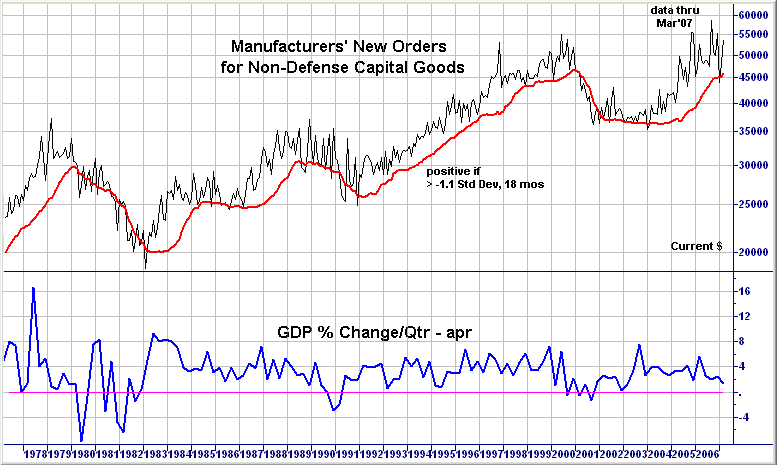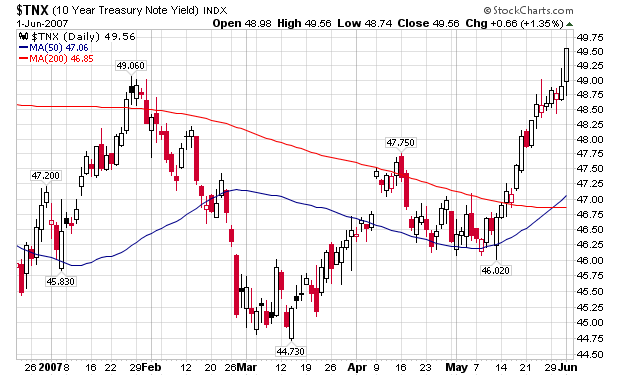According to Thomson Financial, earnings at S&P 500 companies are expected to grow just 3.8% in the second quarter, as the downturn in the housing market took its toll on profits from companies that depend on U.S. consumers.
While profit estimates may well rise in coming weeks, it seems very likely that earnings growth will again be below 10%, according to John Butters, senior research analyst at Thomson Financial.
In the first quarter, earnings for S&P 500 firms grew 8.3%, according to Thomson Financial's latest estimate. This marked the end of a record streak of 14 consecutive quarters of double-digit earnings growth. Earnings slowed as the U.S. economy grew at a sluggish 0.6% during the quarter.
Wall Street had still cheered the first-quarter performance, which came in better than initially feared. At one point, first-quarter earnings were expected to grow just 3.3% as companies told analysts to lower their expectations.
Similarly, expectations for the second quarter may also be lifted.
"There is a sharp deceleration of earnings growth," said Butters. "But we're still in a wait- and-see mode. It was the same story in the first quarter but then many companies beat estimates by a wide margin."
Let's back-up to the first quarter to see what happened.
1.) Analysts lowered their expectations, which lowered growth projections. Then companies beat those low projections pretty handily. This made earnings look better than they were.
2.) Companies are quite adept at managing earnings. It's incredibly important to remember that companies have public relations people who know how to transmit specific information. By lowering expectations, companies can make a weaker quarter look better than it actually is by beating lowered expectations.
3.) We had this exact same pattern last quarter. That does not mean we will have a repeat this quarter. But it is interesting that events are unfolding in the same way up until now.
It's important to remember the interlocking nature of the world economies now.
Global growth was credited with helping many firms beat estimates in the first quarter.
At the same time, a lower dollar helped boost the earnings of multinationals, which translate overseas revenues in advantageous terms, while also boosting demand for U.S. exports.
A weak dollar probably helped again this quarter but the contribution to earnings won't necessarily be much better than in the first quarter. The dollar has halted its slide and regained some ground since late April.
International sales were a big boost to larger companies in the first quarter. Because foreign economies are still growing at a good pace there is no reason to expect this trend to stop.
However:
With the housing market continuing to worsen and gasoline prices surging, pressures are building on U.S. consumers.
The US consumer remains a wild card in the whole affair. Remarkably, the US consumer is still spending money. Personal consumption expenditures increased .5% in the latest BEA report. The last batch of retail reports was fair -- nothing to write home about but not horrible. In short, the US consumer still appears to be spending money. However, with higher gas prices and the home ATM drying up, there is an important question of will the trend continue.
Wednesday the commerce department reports retail sales. Expect a lot of focus on this number.
